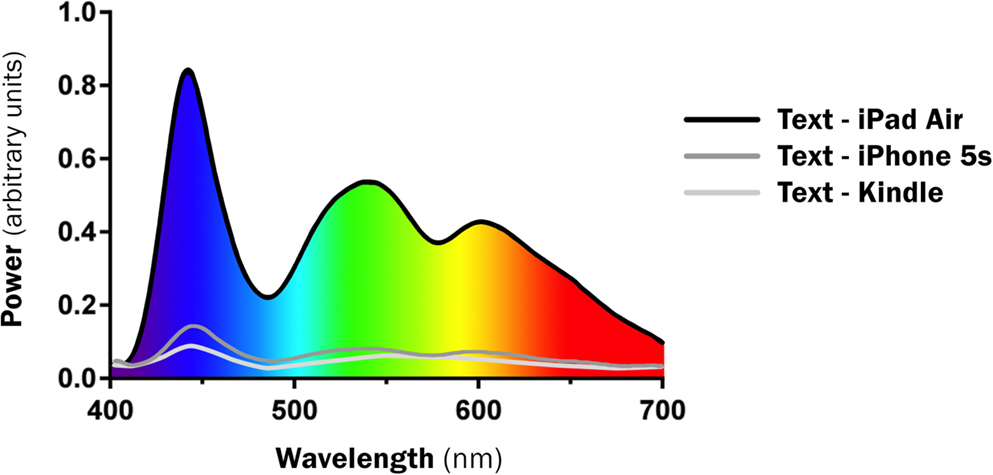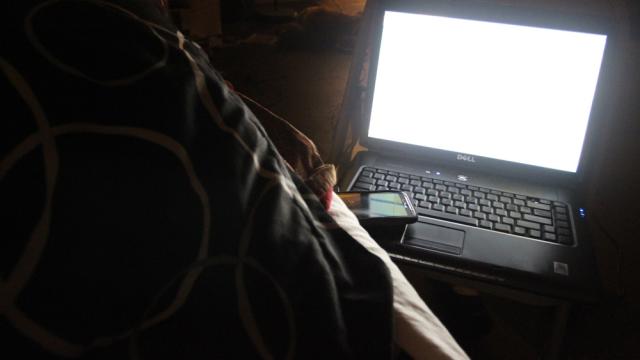It’s not news that smartphones, tablets and e-readers emit a blue light that can keep us up when it’s time for bed. But in addition to abstaining from screens an hour before bed, experts say that all gadgets should have a “bedtime mode.”
Researchers from the UK have published their work in the Frontiers in Public Health journal. They explain that using light-emitting (LE) devices before bed can mess with your body’s production of melatonin, which means the screens can impede a good night’s rest — especially since those screens are getting bigger and brighter all the time.
Though light does generally make a person alert, there are certain colours of light that can be more or less of a wake up call. The study says, “Short-wavelength-enriched light (blue-enriched) is likely to cause the most disruption, as it most effectively suppresses melatonin and increases alertness.”
To see how much blue light screens are giving off, the group tested some of “the latest” LE devices, including an iPad Air, iPhone 5s, and a Kindle Paperwhite 1st generation (yes, they’re actually older models — but the team addresses this as a limitation in the discussion at the end of the paper). In a dark room the team got spectrometric light readings from all the gadgets at each manufacturer’s advised reading distance.

The thick black line on top represents the largest of the tested screens, belonging to the iPad Air. The other, smaller screens don’t have as high a peak in the blue light region but the lines still show that there is more blue light being emitted.

This next graph shows the light readings from the iPad’s screen again. But the lighter, grey-coloured line represents the readings filtered through orange-tinted glasses. The blue light peak is way below where it once was.
So, you could wear orange-tinted glasses if you’re staring at a screen before bed. Or you could just install an app that reduces the blue light emitted from whatever device you’re using. The researchers mention Kids Sleep Dr, a free app that launched in April, and an app they called “sleep-aware.” There’s also F.lux, which works on Mac, Windows and Linux. Android has a few options available too (Twilight and Bluelight Filter are among them).
As you can see, there’s no shortage of apps that lessen the blue light strain from the screens we use, but wouldn’t it be smart for companies to just bake the feature in? The researchers say an automatic “bedtime mode” would be the fastest fix for those seeing a connection between screen use and sleepless nights. But manufacturers would have to be on board.
[Frontiers in Public Health; h/t Engadget]
Image: viviandnguyen_ / CC BY-SA 2.0.
